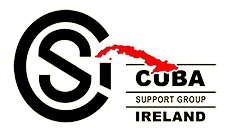Another counterrevolutionary provocation took place January 27, in front of the Ministry of Culture, when a group of persons, mostly cyber-mercenaries in the pay of the U.S. government, reenacted an old script about dialogue with the institution, which is, in fact, of no interest to them

Another counterrevolutionary provocation took place on the morning of January 27, in front of the Ministry of Culture, when a group of persons, the majority known to be cyber-mercenaries in the pay of the U.S. government, mounted a media show with a re-edited version the script about “necessary dialogue” between institutions and artists, a dialogue that this group has sabotaged on a number of occasions and which, in fact, is of no interest to them, as has been made clear by their conduct since November of 2020.
The show was intended to generate a climate of violence and chaos that would allow them to sell to the world an image of Cuban institutions divorced from the reality of creators and artists, attempting to promote repudiation of our functionaries, presenting them as violent, close-minded individuals who opposed any sort of understanding.
Everything had been rehearsed in advance. The supposed discontented creators had no intention of meeting with anyone at the Ministry, and were actually only a minority of those present, since most were members of the “independent” press in the service of U.S. interests. The repeated requests made by one of the deputy ministers to enter the building, to talk, went entirely unheeded.
The group’s mission, carefully planned beforehand was to provocatively challenge authorities and somehow oblige them to take action. They were looking for a confrontation, escalating the tensions in hopes that someone would lose control.
This is a textbook tactic. The idea is to stay at the site, stage a sit-in to attract attention, use the media, that are part of the plan, to generate supportive public opinion, call for more participants on social networks, and construct a little Maidan outside the Ministry of Culture. This is the old, many times failed, dream of the CIA to repeat the Kiev events in Havana.
The process of staging a soft coup has been outlined by the Center for Applied Nonviolent Action and Strategies (Canvas), the socio-political subversion lab of Srdja Popovic, founder along with Slobodan Dinovic of the Otpor movement that in 2000, on orders from and financed by the CIA, contributed to overthrowing Yugoslavian President Slodoban Milosevic. The Center’s manual states that one of the first tasks is the creation of hotspots of “civil disobedience, violence and chaos,” besieging government institutions, functionaries, and workers, generating anxiety, distrust and fear.
What occurred in front of the Ministry in Havana is part of this “non-violent” war strategy against Cuba, one more attempt to create the detonator needed to make a soft coup possible.
Following U.S. instructions precisely, as projected in Gene Sharp’s manual and by the aforementioned Canvas, a veritable “pack” of mercenaries was launched to provoke, discredit and harass Cuban authorities and present the anti-Cuban protestors as victims.
The version of the events disseminated by the U.S. embassy in Havana on Twitter is so far removed from the reality of what occurred at the Ministry of Culture on January 27, it appears to have been drafted elsewhere. The truth made clear in the manuals of creators, financiers, and promoters of this type of aggression is that such actions are violent, interventionist maneuvers meant to produce coups, that in turn lead to the establishment of “failed states” in the hands of “transitional governments,” incapable of confronting U.S. forces on the battlefield and therefore easy to occupy and subjugate.
As has been denounced on previous occasions, what is sought is the creation of conditions for a direct intervention in Cuba, in the style of 1898, with the United States presenting itself as the “savior” of a country in chaos. Choosing the eve of the anniversary of José Martí’s birth as the date for this disturbance was miscalculated by those who do not know the history of our country. For Cubans, Martí is a symbol of independence, a constant reminder to be true to our ideals, ideas that revolutionaries carry deep in our hearts and that, time and time again, defeat the plans of the empire and its mercenaries.
source: Granma






